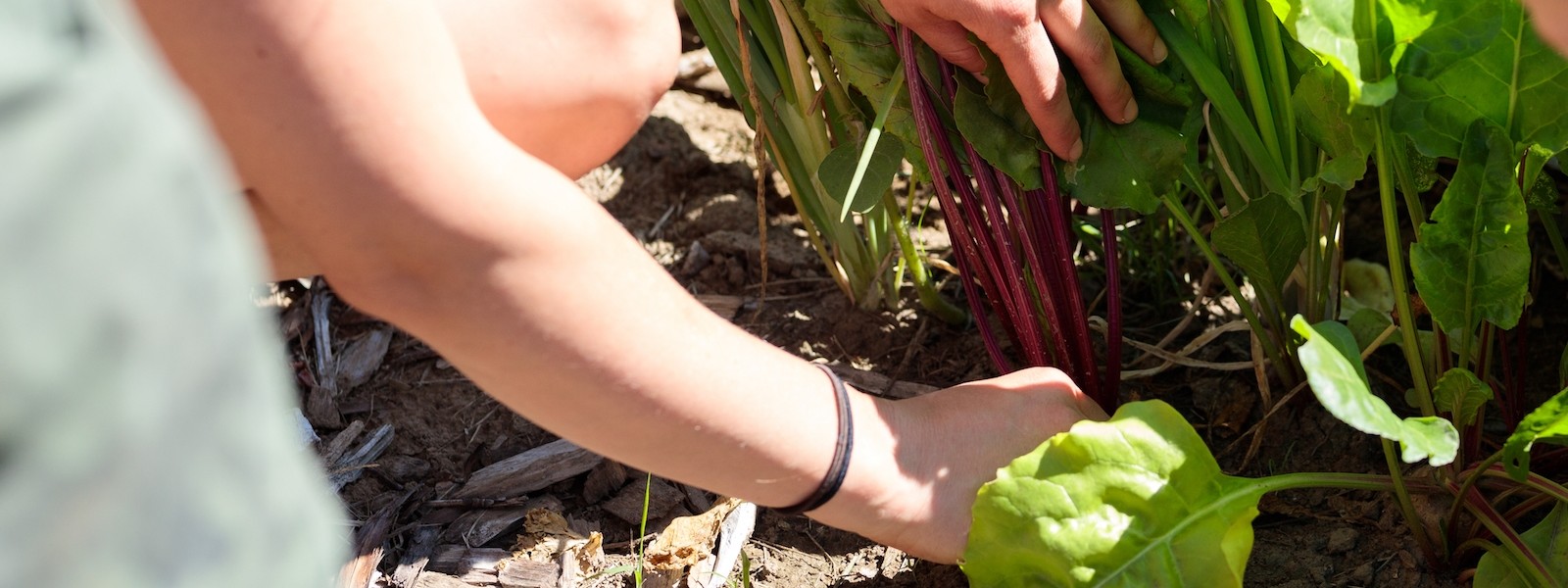How to Prune Tomatoes
It is quite beneficial to prune your tomatoes for better flavor, higher yields, and disease resistance. The main goal is to direct the energy of growth to fruit production rather than unnecessary foliage growth.
At the farm we like to trellis and train our indeterminate varieties (vining types) like heirlooms and slicers to produce fruit only off of the main stem. Pruning gives us greater yields, better fruit, and minimizes disease on our plants. It also makes it easier to harvest fruit, and to find the hornworm caterpillars in August!
Staking plants early is important. Do so at planting time, or at least before too much root growth occurs. Staking plants later can damage roots and shock the plant. When building your staking system remember to envision a huge plant heavy with fruit and build the system tall and strong enough to support that late August tomato plant!
Pruning Tips
- Start by identifying the main stem of the plant and follow up to the growth leader. The growth leader on the main stem will always have flowers and fruit before the growth leader on suckers, or off shoots from the main stem.
- The next step is learning how to identify what are commonly called “suckers.” These are officially called apical meristematic plant tissue. The sucker is the junction between your stem branch and a leaf - it is always above a leaf. It juts out at about a 45 degree angle in this joint. You can begin pruning your suckers right away, and can continue throughout the entire season.
- Prune any leaves touching the soil. Many pests and diseases reside in the soil, and foliage in direct contact with soil is more prone to developing disease and pest issues. Many farmers know that even minimal soil contact with your leaves can be bad news, and you’re better off pruning these leaves than leaving them as pathways for diseases and pests to infiltrate your plant. You can also use straw mulch between tomato plants to further deter any soil splash up during watering.
- Remove some leaves in the interior of the plant to allow more light and air flow into it.
- There is a fine line between taking off too much foliage and not enough. You want the tomato plant to be able to shade its fruit, otherwise a sun scald will form on it. Leave the leaf directly above the fruit to provide shade. Leaving the leaf directly below the fruit set is also important for tasty fruit as it is the leaf that provide sugars to the fruit.
- Towards the end of your season (mid September in Vermont), you can start topping off your plants if they become too large. New vegetative growth at this time most likely will not bear fruit, so you’re better off having your plant devote its energy to fruit production on existing flowers.
Interested in learning more? The Grower’s Library at Johnny’s Selected Seeds may have the information you’re looking for.

